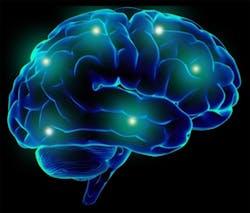Ultraviolet camera images the brain
Researchers at Cedars-Sinai Medical Center (Los Angeles, CA, USA) and the Maxine Dunitz Neurosurgical Institute are investigating whether an ultraviolet camera on loan from NASA's Jet Propulsion Laboratory could help surgeons perform brain surgery more effectively.
If the system works, it could provide the visual details needed to help them distinguish areas of healthy brain from deadly tumors called gliomas, which have irregular borders as they spread into normal tissue.
The tumors' far-reaching tentacles pose big challenges for neurosurgeons: Taking out too much normal brain tissue can have catastrophic consequences, but stopping short of total removal gives remaining cancer cells a head start on growing back.
According to Dr. Keith Black, chair of the Department of Neurosurgery at Cedars-Sinai, delineating the margin where brain tumor cells end and healthy cells begin never has been easy, even with recent advances in medical imaging systems.
But because tumor cells are more active and require more energy than normal cells, a specific chemical (nicotinamide adenine dinucleotide hydrogenase or NADH) accumulates in them. The NADH strongly absorbs ultraviolet light that can then be imaged by the camera and displayed.
"The ultraviolet imaging technique may provide a 'metabolic map' of tumors that could help us differentiate them from normal surrounding brain tissue," says Dr. Ray Chu, a neurosurgeon leading the study.
-- Dave Wilson, Senior Editor, Vision Systems Design
